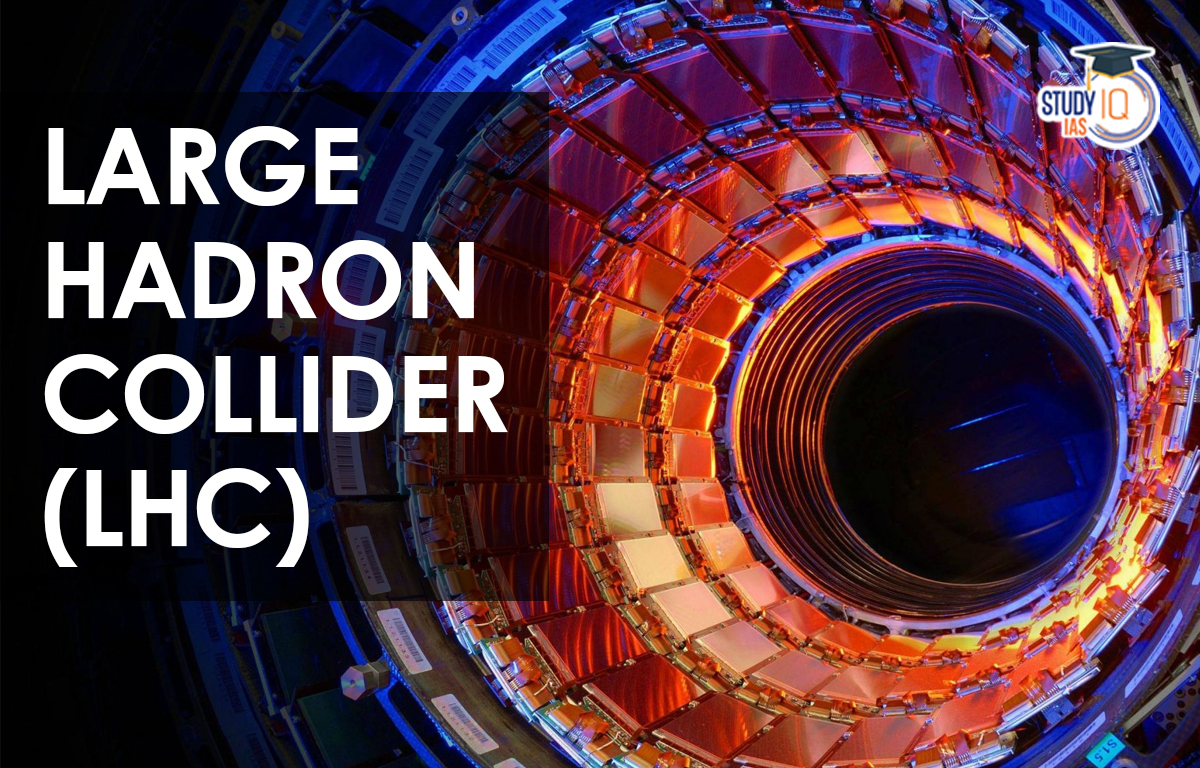Table of Contents
Context: Large Hadron Collider will soon start functioning for its third season at CERN.
About Large Hadron Collider
- It is built by the European Organisation for Nuclear Research (CERN).
- It is a 27-km-long track-loop buried 100 metres underground at CERN, the European Organization for Nuclear Research, on the Franco-Swiss border near Geneva, Switzerland.
- It is a giant, complex machine built to study particles that are the smallest known building blocks of all things.
- Objective: LHC’s goal is to test the Standard Model, the mathematical framework physicists use to describe all of the known fundamental particles in the universe and the forces through which they interact.
Functioning
- In its operational state, it fires two beams of protons almost at the speed of light in opposite directions inside a ring of superconducting electromagnets.
- The magnetic field created by the superconducting electromagnets keeps the protons in a tight beam and guides them along the way as they travel through beam pipes and finally collide.
- LHC specialises in accelerating a beam of hadronic particles to certain specifications and delivering it.
- LHC uses a distribution system of liquid helium to keep its critical components ultra-cold at minus 271.3 degrees Celsius, which is colder than interstellar space.

Various Experiments at LHC
- ATLAS is the largest general purpose particle detector experiment at the LHC.
- ATLAS is designed to record the high-energy particle collisions of the LHC, which take place at a rate of over a billion interactions per second in the centre of the detector.
- More than 100 million sensitive electronics channels are used to record the particles produced by the collisions, which are then analysed by ATLAS scientists.
- Compact Muon Solenoid (CMS) experiment is one of the largest international scientific collaborations in history, with the same goals as ATLAS, but which uses a different magnet-system design.
- ATLAS and CMS detectors discovered the Higgs boson in 2012.
- ALICE (A Large Ion Collider Experiment) is a detector dedicated to heavy-ion physics at the Large Hadron Collider (LHC).
- It is designed to study the physics of strongly interacting matter at extreme energy densities, where a phase of matter called quark-gluon plasma forms.
- The Large Hadron Collider beauty (LHCb) experiment specializes in investigating the slight differences between matter and antimatter by studying a type of particle called the “beauty quark”, or “b quark”.
Major Findings at LHC
- Discovery of Higgs boson in 2012.
- Higgs boson is the fundamental force-carrying particle of the Higgs field, which is responsible for granting other particles their mass.
- Tested the predictions of the Standard Model of particle physics, the reigning theory of subatomic particles.
- Observed exotic particles like pentaquarks and tetraquarks and checked if their properties are in line with theoretical expectations
- Quarks are elementary particles that usually combine in groups of twos and threes to form hadrons such as the protons and neutrons that make up atomic nuclei.

Future of LHC
- Future Circular Collider: In 2018, CERN released the proposal for a 100-kilometre-circumference Future Circular Collider.
- Compared to the 13.6 trillion electron volts energy level of LHC, the Future Circular Collider will work at energy levels of up to 100 trillion electron volts.
- The Future Circular Collider is an even bigger machine aimed at ensuring the seamless continuation of the world’s particle physics programme in the post-LHC era.
About CERN
- European Organisation for Nuclear Research (CERN) is the world’s largest nuclear and particle physics laboratory.
- CERN is based in Geneva on the French-Swiss border. It has 23 member states.
- India in 2016 became an associate member of the CERN.
- Indian scientists have played a significant role in the ALICE experiment, which is a dedicated experiment for search and study of Quark Gluon Plasma (QGP).
Circular Electron Positron Collider (CEPC)
- It is a proposed electron positron collider by the Chinese high energy physics community in 2012.
- It is a double-ring collider with electron and positron beams circulated in opposite directions in separate beam pipes, and the detectors are installed at two interaction points (IPs).
- Primary physics goal is to use the CEPC as a Higgs factory.


 How African Reserves Eliminated Rhino Po...
How African Reserves Eliminated Rhino Po...
 Why India Needs Its Own Economic Model?
Why India Needs Its Own Economic Model?
 Challenges in India’s Airline Sector: ...
Challenges in India’s Airline Sector: ...

























